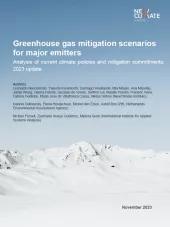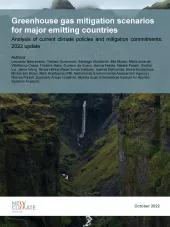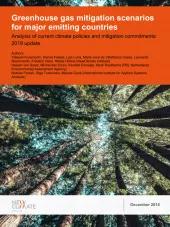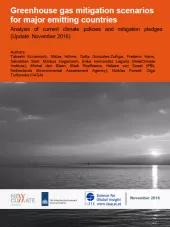To guide efforts in ensuring that countries are on track to achieve the climate goal of the Paris Agreement, we annually evaluate the progress of 25 major emitters, which collectively cover more than 80% of global emissions, towards their climate change mitigation targets. In our 2024 update report, we modelled greenhouse gas (GHG) emissions towards 2030 based on countries’ policies as of July 2024 and compared these emissions to countries’ current NDC targets to evaluate whether countries are on track to meet them.
GHG emissions of the 25 countries assessed may peak before 2025 – if existing policies are implemented effectively
Aggregated emissions for the 25 countries could be 2% below 2019 levels by 2025 and reach 10% below 2019 by 2030. This projected 10% reduction in emissions in the best-case scenario is positive but remains insufficient, given that limiting global warming to 1.5°C requires a 43% emissions reduction over the same period. However, this is an improvement compared to our 2023 report. In 2030, we project that emissions will reach 34.2 – 39.8 GtCO2e. This corresponds to a change of between -10% and +4% compared to 2019 levels — compared to last year, where emissions were estimated to range between -6% to +8%. This means emissions are projected to shift downward across the range, decreasing 4 percentage points at both the upper and lower end of the scenarios in one year.
Fig 1: Overview of emissions projections (including land use) under current policies - Colours indicate the emissions trend between 2021 and 2030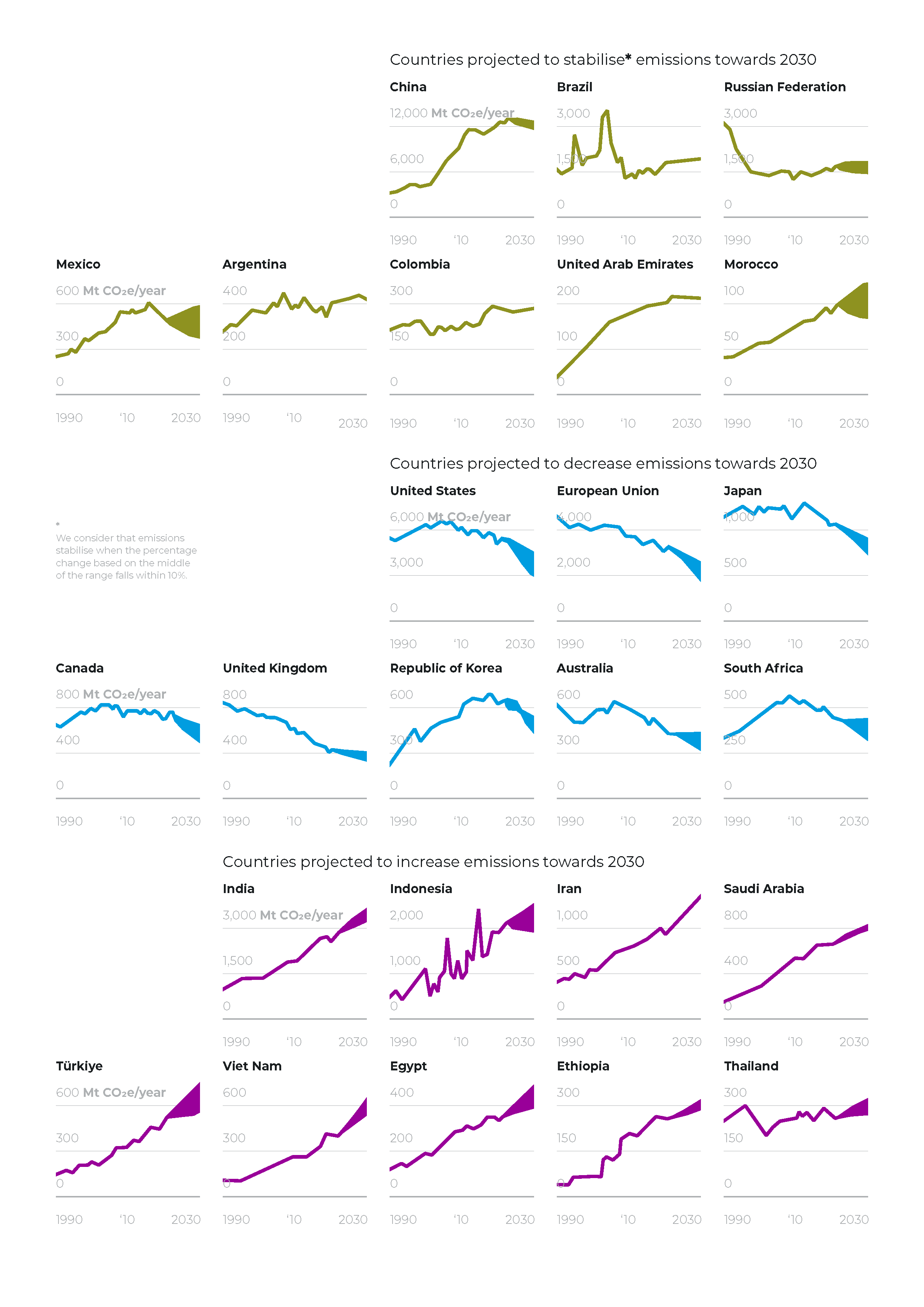
Faster renewable uptake and additional policies result in emissions projections substantially lower than estimated in 2023
Our scenario indicates emissions will be approximately 5% lower in 2030 than projected in our 2023 report. In China and India, increased adoption of renewable energy drives down emissions projections through 2030. In Canada, the projected reduction in emissions is due to additional support for electric vehicles and improvements in carbon tax schemes. In the United States, tighter emissions standards for coal-fired power plants and road vehicles accelerate the pace of emissions reductions. In Colombia, policies aimed at addressing deforestation are projected to substantially reduce the country’s land-use-related emissions.
No country has updated its NDC since our 2023 report, but several are well-positioned to increase the ambition of their 2030 targets
Since our 2023 update, none of the 25 countries analysed have strengthened their NDCs targets. However, based on our latest projections, half of the countries are already likely on track to meet their unconditional NDC targets (Figure 2).
Given the urgency of the climate crisis, each country has a critical role to play. Countries projected to meet their NDCs are well-positioned to enhance their targets and help close the global ambition gap. Countries projected to fall short of their unconditional NDCs should prioritise adopting additional policies or rigorously implementing existing ones to ensure they meet their targets and contribute to closing the global implementation gap between current policies and countries' NDCs.
Fig 2: Comparison of economy-wide emissions projections under current policies and unconditional NDC targets in 2030 for all 25 countries, except Egypt which only has a conditional target - The percentages are calculated by comparing the full range of the NDC target and current policies scenarios






